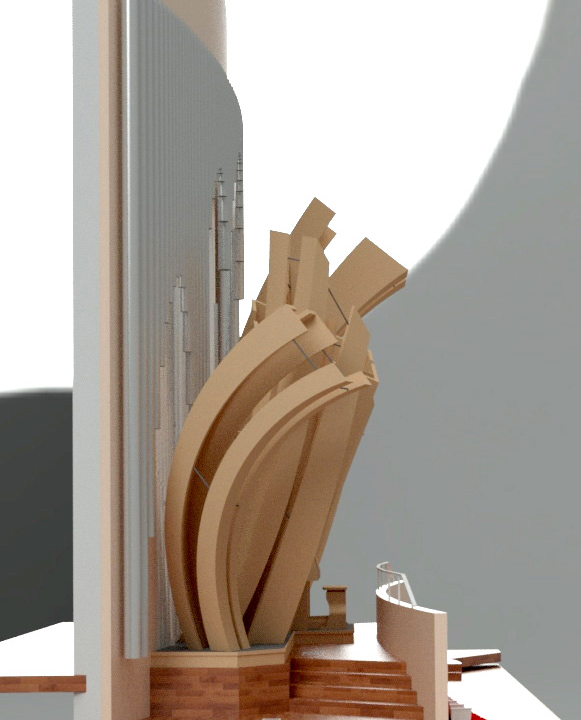 Reiger’s Austrian warehouse is stocked with a variety of certified and aged woods sourced from local forests, and it manufactures its own sheet metal for pipes, which are made of Malaysian tin and Austrian lead. The material and shape of the pipe are critical to its voicing. It will take up to a year to produce the organ and components, which will be shipped to the hall in Wuxi to be assembled and installed by a Rieger technician. Assembly can take up to ten weeks; the voicing and tuning another twelve weeks. “Each of our organs is individually designed for its specific location and space,” Ebele explains. “This applies to both the external design and the tonal and musical concept. All our organs are customised; however, not all our customers are as bold as to implement such an extravagant design as we are able to do in Wuxi.”
Reiger’s Austrian warehouse is stocked with a variety of certified and aged woods sourced from local forests, and it manufactures its own sheet metal for pipes, which are made of Malaysian tin and Austrian lead. The material and shape of the pipe are critical to its voicing. It will take up to a year to produce the organ and components, which will be shipped to the hall in Wuxi to be assembled and installed by a Rieger technician. Assembly can take up to ten weeks; the voicing and tuning another twelve weeks. “Each of our organs is individually designed for its specific location and space,” Ebele explains. “This applies to both the external design and the tonal and musical concept. All our organs are customised; however, not all our customers are as bold as to implement such an extravagant design as we are able to do in Wuxi.”
Our design team conceived Symphony Hall to have the first sculptural façade in Asia, so it’s fitting that it will also be home to the first sculptural organ in Asia. The organ will have 66 stops, 4,859 pipes, four manuals (keyboards) and one pedalboard (played by the feet), for a total of five divisions (sections of pipes, windchests and keyboards). The stops admit pressurized air to sets, or “ranks,” of pipes to produce different types of sound when a key is pressed. The sounds emulate flutes, strings, or reeds, for example, at different timbres and pitches. Designed over the centuries, the stops have long-established names, such as Bombarde, a reed-type stop with a powerful brassy timbre, or Cello, a string-sounding stop with a warm, romantic tone. The organ is also equipped with an ergonomic mobile console, which can adjust the height of the keyboards and the horizontal and vertical movement of the pedalboard to accommodate each organist’s size and shape.
Wuxi’s organ is part of a renaissance in organ building that began in 1989—40 years after nearly all of them in Mainland China were destroyed in the wake of the Cultural Revolution. That first post-revolution organ was a III/60 Reiger-Kloss, installed in the Beijing Concert Hall.
In my three decades of designing performing arts centers, I have frequently looked to a project’s natural setting for inspiration, and the Wuxi organ is no exception. While the region’s trumpet vines inform its bold sculpture, I looked to the acanthus in my own Southern California garden to inspire the interior of Chapman University’s Musco Center for the Arts. The leafy tree canopy springing from the riverbanks of the Spokane River in Washington state reappear in the interior of Gonzaga University’s Myrtle Woldson Performing Arts Center concert hall. And the heavy timber structures in the University of Central Arkansas’s Windgate Center for the Arts concert hall reference the trees of the nearby Ozark Mountains. These visual references to the building’s environs contribute to the patrons’ sense of civic pride, and our design team sought to make this connection again through the organ design in Wuxi Symphony Hall.
Read how acousticians have outfitted the new hall for optimal sound in Perkins Eastman’s 2025 issue of The Narrative.
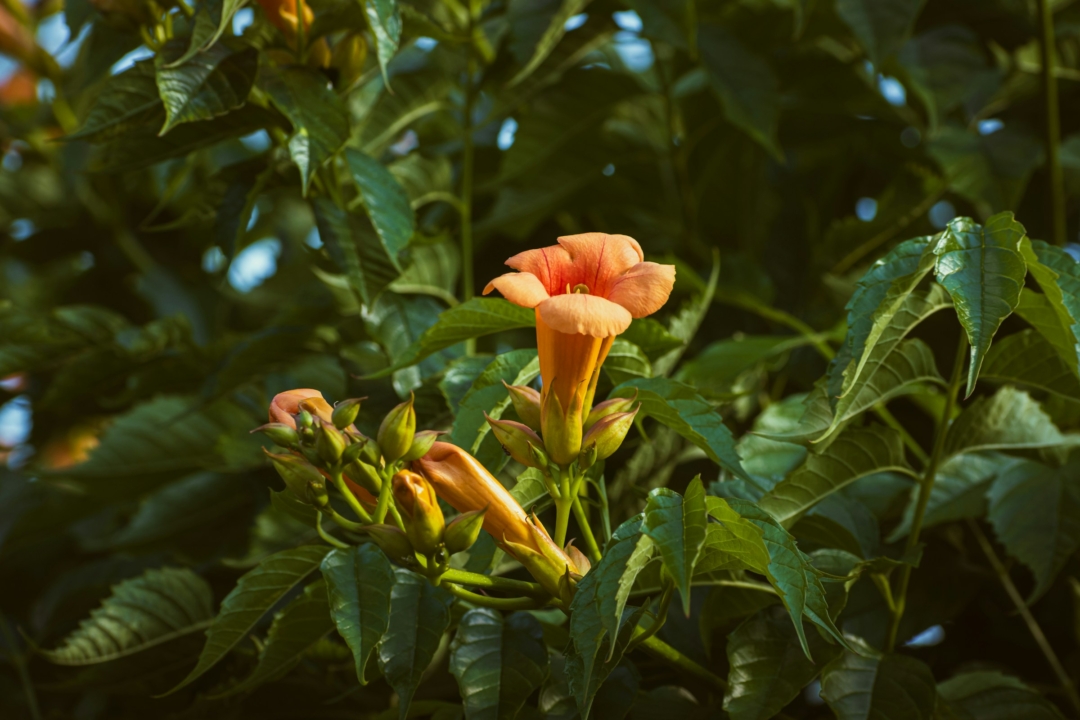
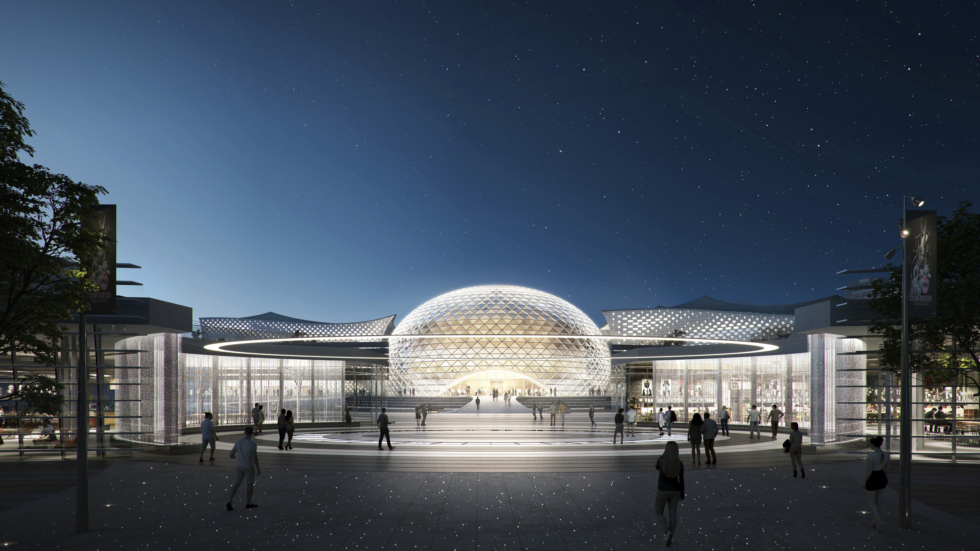

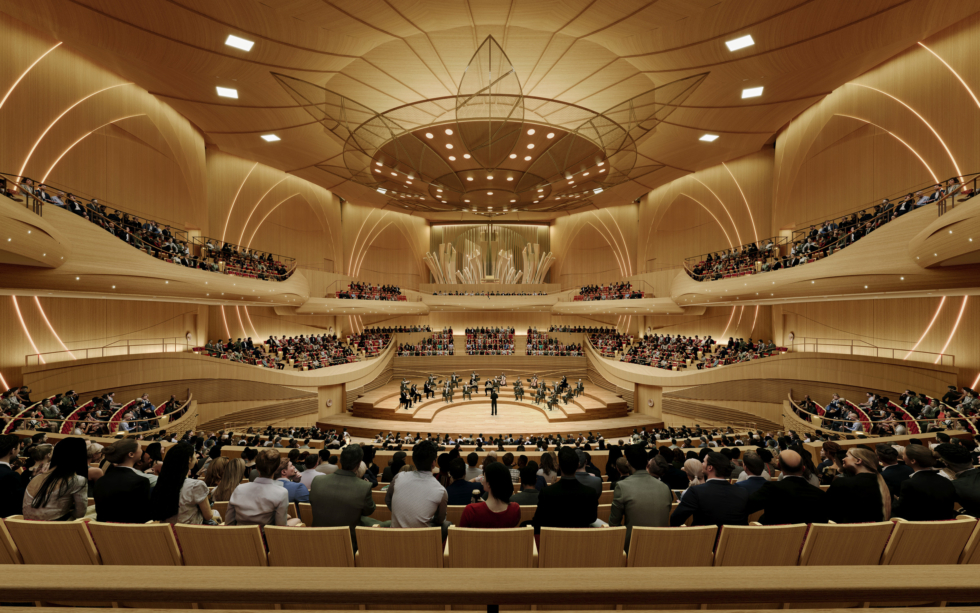

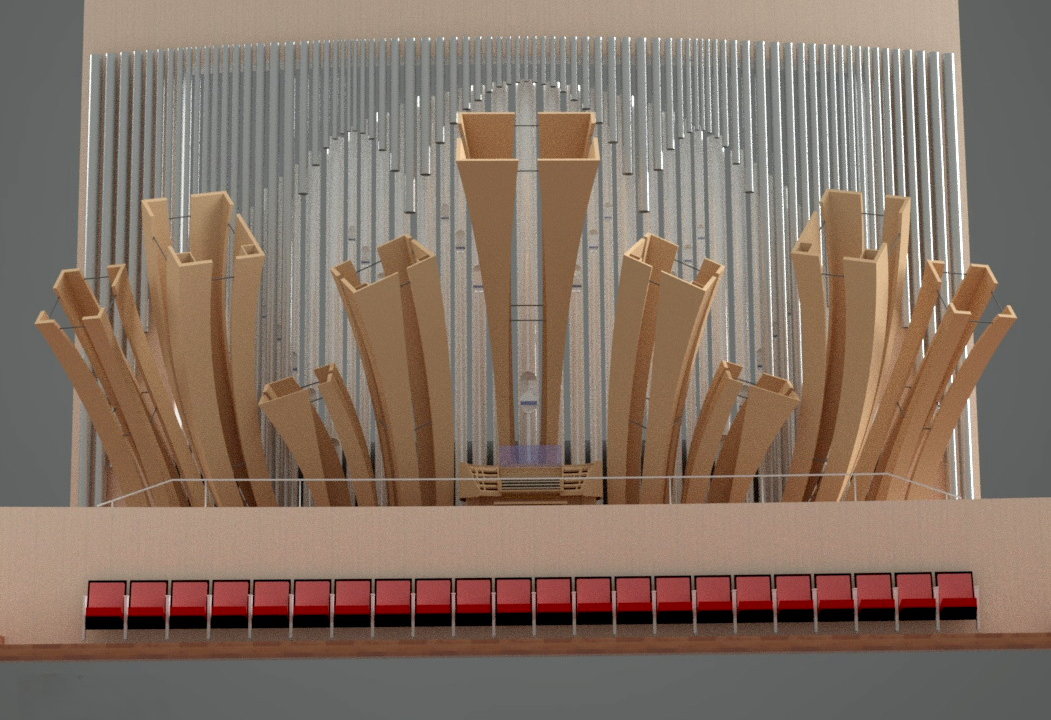
 Reiger’s Austrian warehouse is stocked with a variety of certified and aged woods sourced from local forests, and it manufactures its own sheet metal for pipes, which are made of Malaysian tin and Austrian lead. The material and shape of the pipe are critical to its voicing. It will take up to a year to produce the organ and components, which will be shipped to the hall in Wuxi to be assembled and installed by a Rieger technician. Assembly can take up to ten weeks; the voicing and tuning another twelve weeks. “Each of our organs is individually designed for its specific location and space,” Ebele explains. “This applies to both the external design and the tonal and musical concept. All our organs are customised; however, not all our customers are as bold as to implement such an extravagant design as we are able to do in Wuxi.”
Reiger’s Austrian warehouse is stocked with a variety of certified and aged woods sourced from local forests, and it manufactures its own sheet metal for pipes, which are made of Malaysian tin and Austrian lead. The material and shape of the pipe are critical to its voicing. It will take up to a year to produce the organ and components, which will be shipped to the hall in Wuxi to be assembled and installed by a Rieger technician. Assembly can take up to ten weeks; the voicing and tuning another twelve weeks. “Each of our organs is individually designed for its specific location and space,” Ebele explains. “This applies to both the external design and the tonal and musical concept. All our organs are customised; however, not all our customers are as bold as to implement such an extravagant design as we are able to do in Wuxi.”